The system shown in initially in equilibrium Masses of the blocks A, B, C, D and E are respectively 3m, 3m, 2m, 2m and 2m. Match the conditions in column -I with the effects in column -II
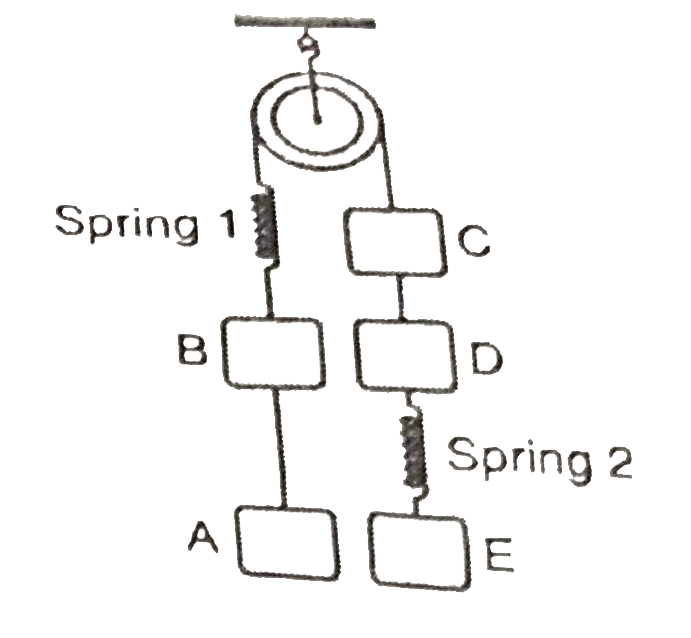
Column -IColumn -II(a) After spring 2 is cuttension in string AB(p) Increases(b)After spring 2 is cuttension in string CD(q) Decreases(c)After spring between Cand pulley is cut tension in string AB(r)Remains constant(d) After spring between Cand pulley is cut tension in string CD(s) Zero
The correct Answer is:a→r;b→q;c→q,s;d→q
After spring 2 is cut, block E is removed.

Topper's Solved these Questions
- FORCE AND NEWTONS LAWS OF MOTIONBOOK - GRB PUBLICATIONCHAPTER - FORCE AND NEWTONS LAWS OF MOTIONEXERCISE - Integer question
15 Videos
- FORCE AND NEWTONS LAWS OF MOTIONBOOK - GRB PUBLICATIONCHAPTER - FORCE AND NEWTONS LAWS OF MOTIONEXERCISE - Comprehension
12 Videos
- FORCE AND NEWTONS LAWS OF MOTIONBOOK - GRB PUBLICATIONCHAPTER - FORCE AND NEWTONS LAWS OF MOTIONEXERCISE - Assertion- Reason
4 Videos
- BASIC MATHEMATICSBOOK - GRB PUBLICATIONCHAPTER - BASIC MATHEMATICSEXERCISE - Problems For Practice
35 Videos
- FRICTION AND CIRCULAR MOTION BOOK - GRB PUBLICATIONCHAPTER - FRICTION AND CIRCULAR MOTION EXERCISE - Comprehension type
11 Videos
Similar Questions
The system shown in the Fig. is in equilibrium. Find the initial acceleration of A, B and C just after the spring 2 is cut.
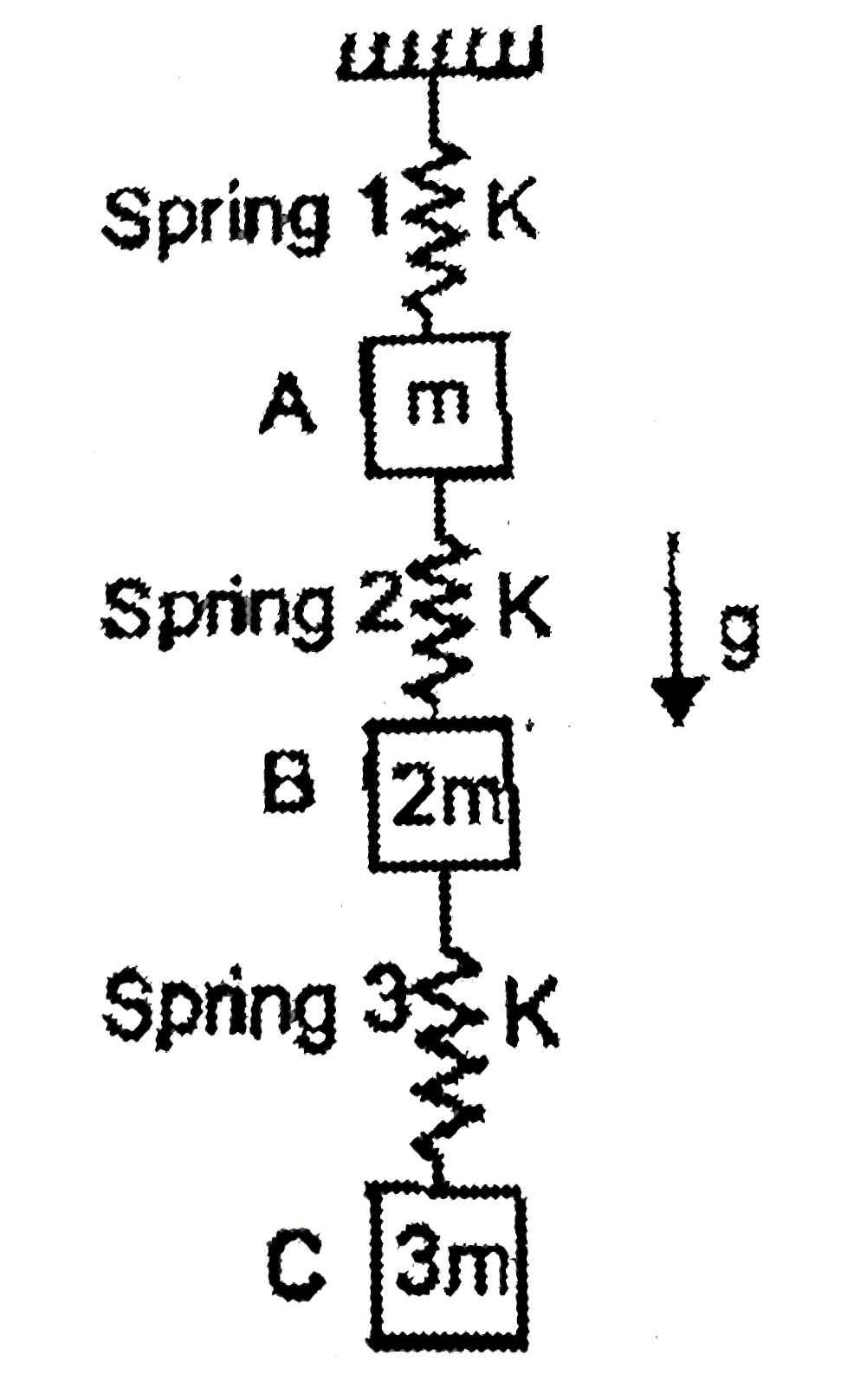
View SolutionSystem shown in fig is in equilibrium and at rest. The spring and string are massless now the string is cut. The acceleration of mass 2m and m just after the string is cut will be:
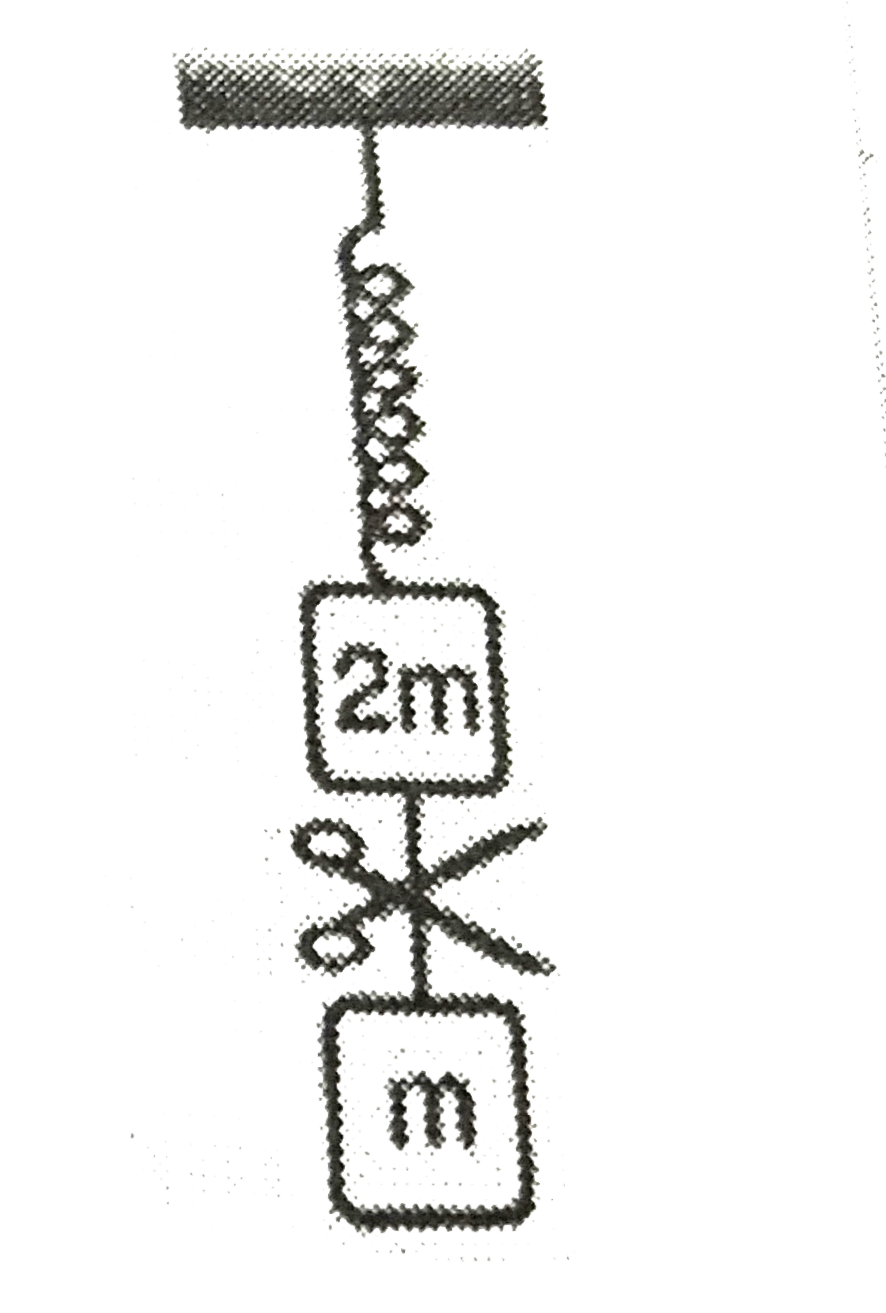
View Solution
Knowledge Check
System shown in fig is in equilibrium and at rest. The spring and string are massless now the string is cut. The acceleration of mass 2m and m just after the string is cut will be:
 Ag/2 upwards, g downwardsBg upwards, g/2 downwardsCg upwards, 2g downwardsD2g upwards, g downwards
Ag/2 upwards, g downwardsBg upwards, g/2 downwardsCg upwards, 2g downwardsD2g upwards, g downwardsThe system shown in the following figure is in equilibrium and at rest. The spring and string are massless. Now, the string is cut. The acceleration of mass 2m and m, just after the string is cut, will be
 Ag/2 upwards, g downwards.Bg upwards, g/2 downwards.Cg upwards, 2 g downwards.D2g upwards, g downwards.
Ag/2 upwards, g downwards.Bg upwards, g/2 downwards.Cg upwards, 2 g downwards.D2g upwards, g downwards.System shown in figure is equilibrium in vertical plane. Consider the string and spring to be massless. Both the blocks have same mass 'm'. If the string is cut, then just after cutting it :
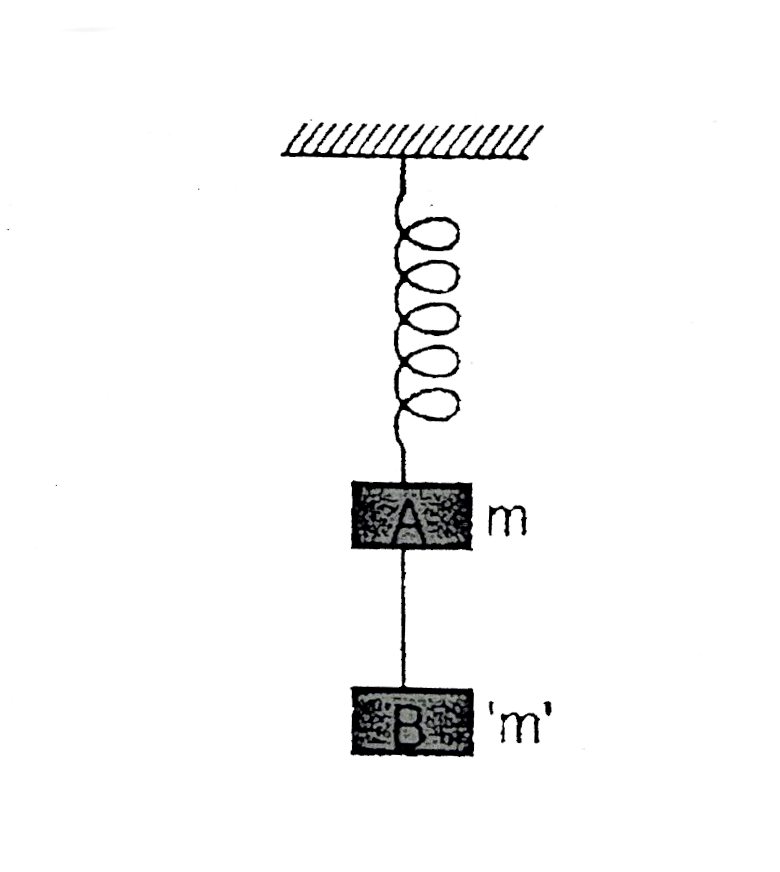 AAcceleration of 'A' is 'g' upwardsBAcceleration of 'A' is '2g' upwardsCAcceleration of 'B' is 'g' upwardsDAcceleration of 'B' is 'g' downwards
AAcceleration of 'A' is 'g' upwardsBAcceleration of 'A' is '2g' upwardsCAcceleration of 'B' is 'g' upwardsDAcceleration of 'B' is 'g' downwards
System shown in fig is in equilibrium and at rest. The spring and string are massless now the string is cut. The acceleration of mass 2m and m just after the string is cut will be:

View SolutionThe system shown in the figure is in equilibrium at rest. The spring and string are massless Now the string is cut. Find the acceleration of the blocks just after the string is cut.
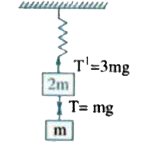
View SolutionMatch the column-I to value of Tension given in column-II, assuming mass of particle equal to m
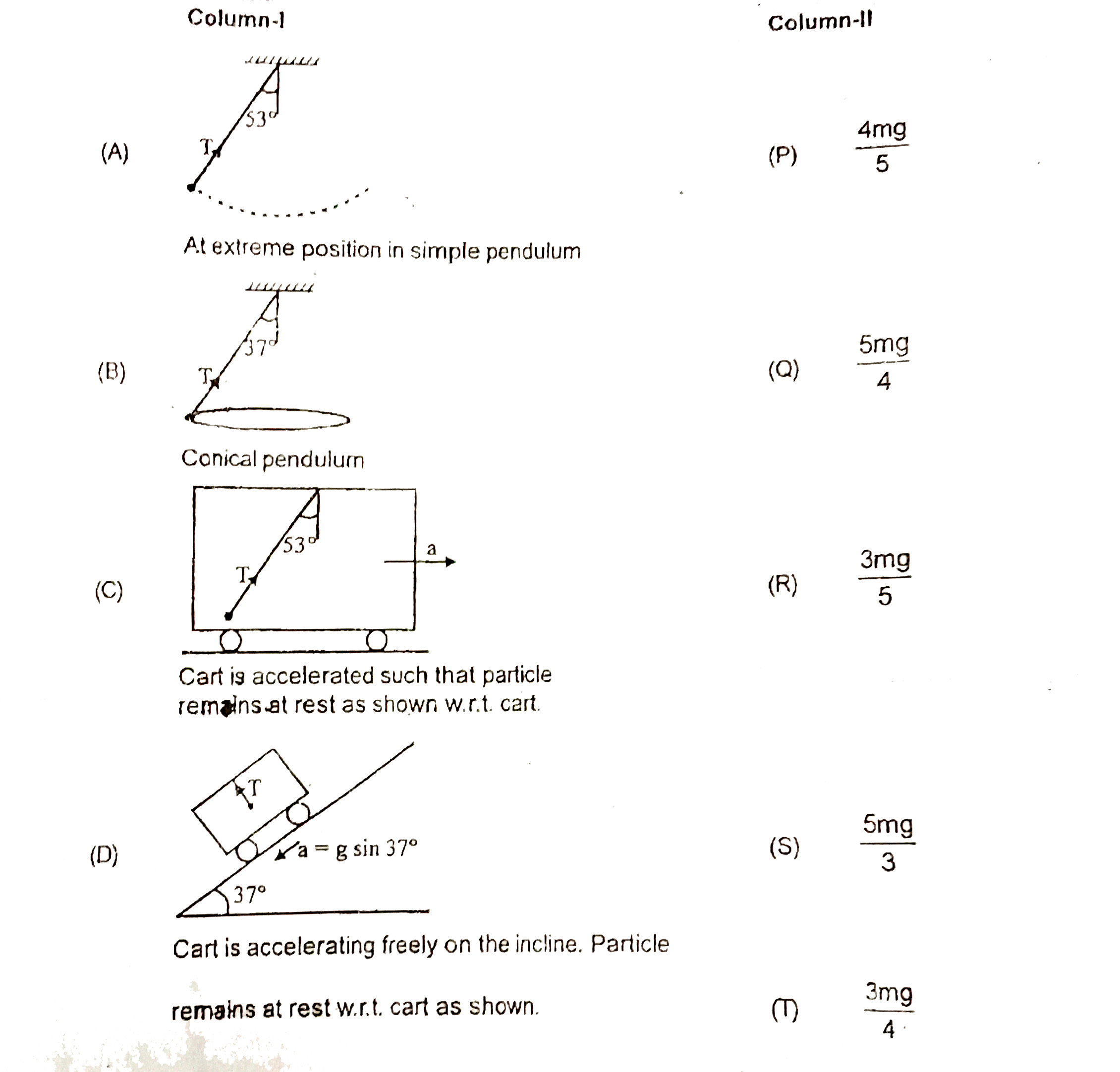
View SolutionSystem shown in figure is equilibrium in vertical plane. Consider the string and spring to be massless. Both the blocks have same mass 'm'. If the string is cut, then just after cutting it :

View SolutionThe system shown adjacent is in equilibrium. Find the acceleration of the blocks A,B &C all of equal masses m at the instant when
(Assume springs to be ideal)
(i) The spring between celling & A is cut.
(ii) The spring (inextensible) between A&B is cut.
(iii) The speing between B & C is cut.
Also find the tension in the string when the system is at rest and in the above 3 cases.
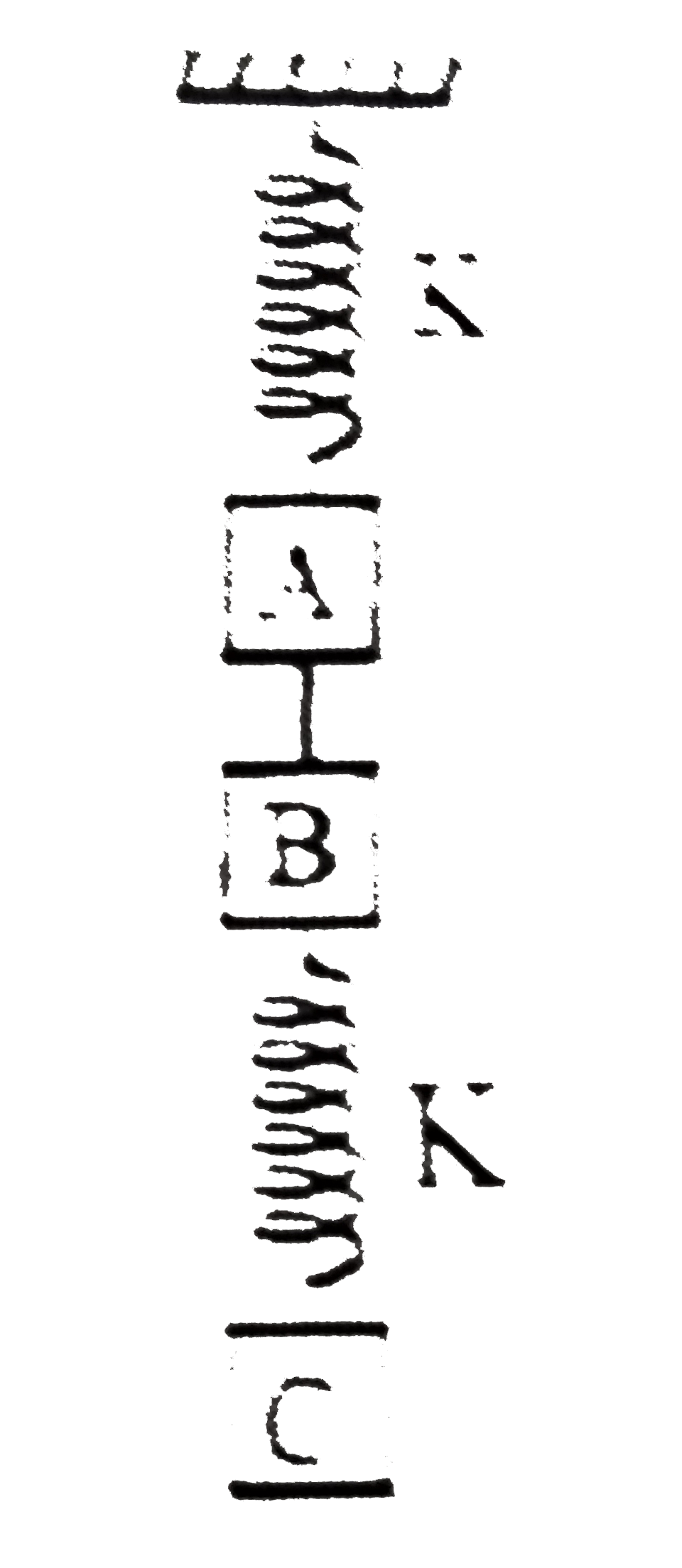
View Solution
